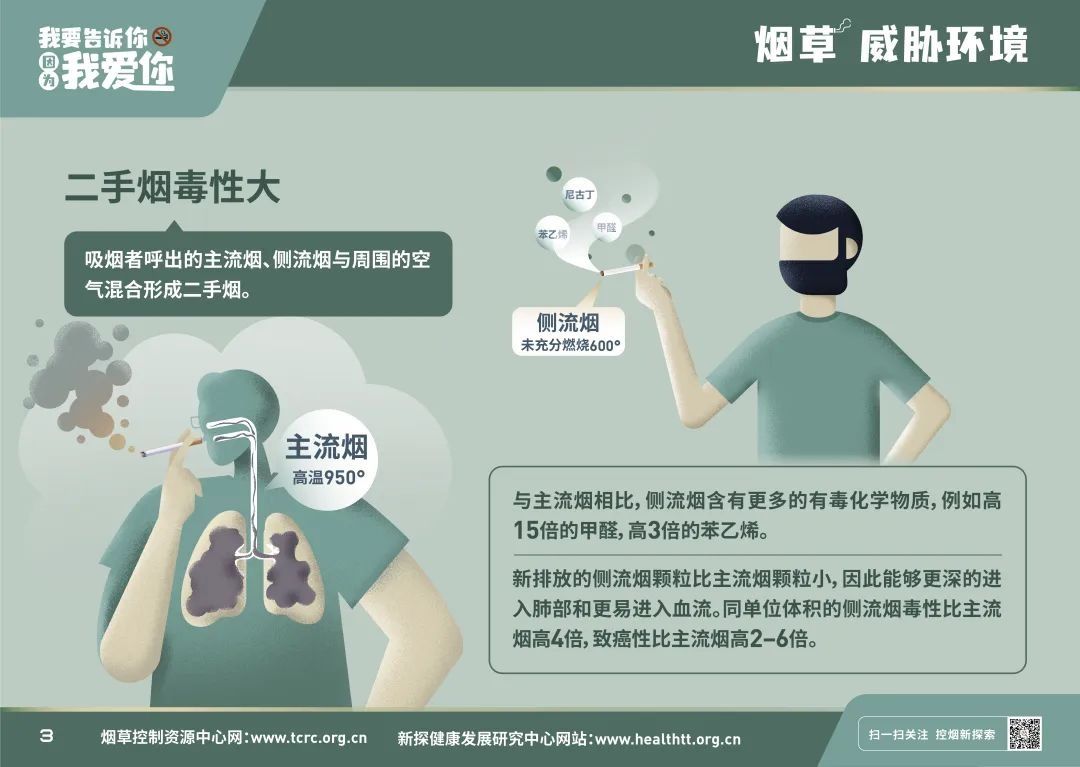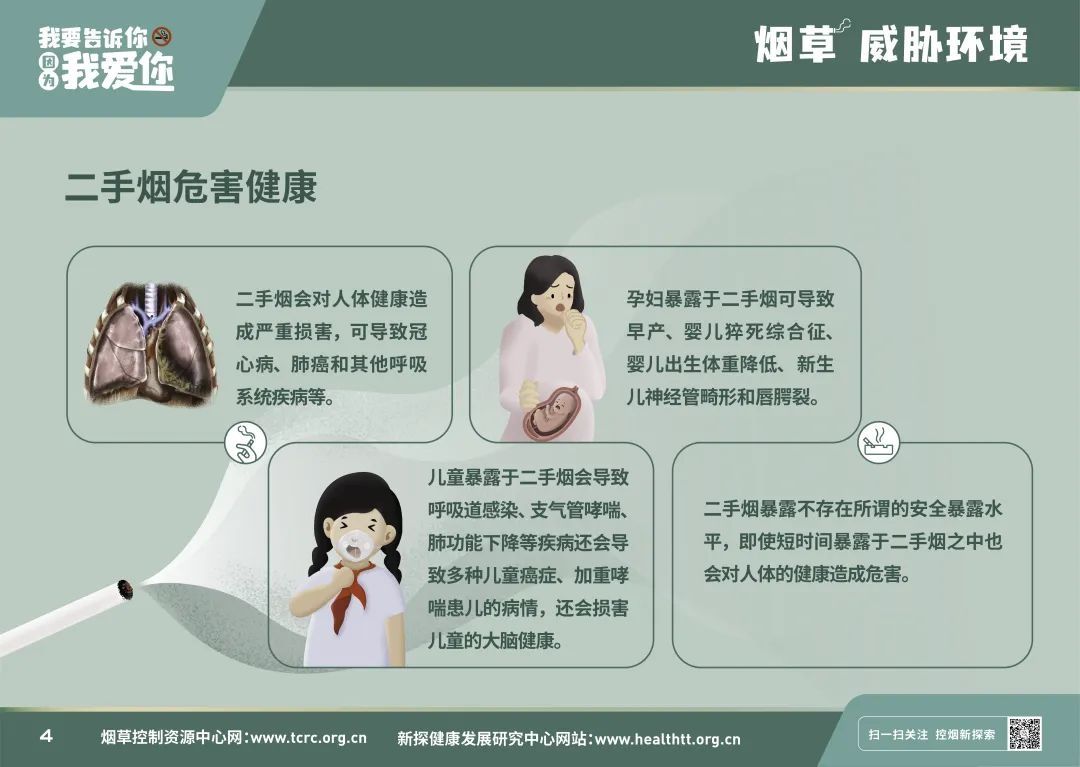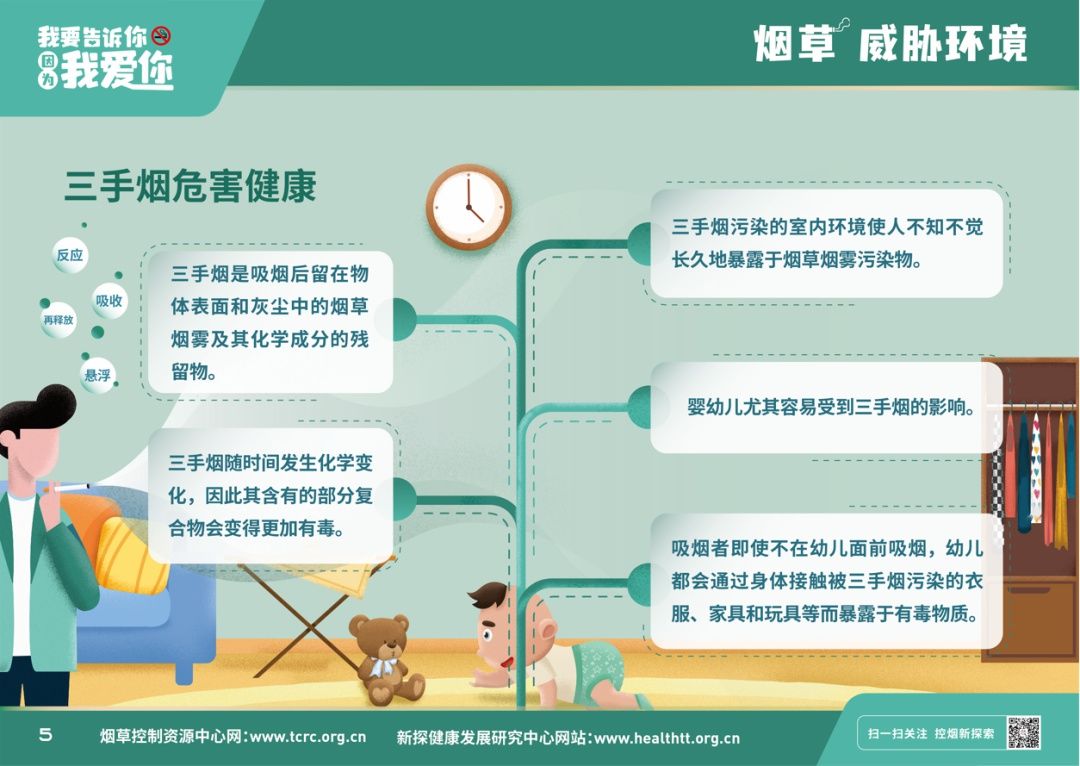【Source: Baoji Health】
Secondhand smoke
Secondhand smoke refers to the “mainstream smoke” exhaled by smokers during the smoking process. “Tobacco smoke and ‘sidestream’ tobacco smoke emitted into the environment from lit cigarettes or other smoking tobacco products.

Secondhand smoke contains hundreds of chemicals known to be toxic or carcinogenic, of which at least 69 are carcinogens, including heavy metals , Tobacco-specific nitrosamines and polycyclic aromatic hydrocarbons and other harmful substances can damage genetic material and interfere with normal cell division, destroy the body’s immune function, and cause cancer and deformity.
There is no so-called safe level of exposure to secondhand smoke, and even short-term exposure to secondhand smoke can cause harm to human health. Exhaust fans, air conditioners and other ventilation devices cannot prevent non-smokers from inhaling secondhand smoke.

Thirdhand smoke
Tobacco smoke is adsorbed on clothes and furniture Residues on surfaces such as cigarettes, carpets, walls, and even hair and skin, which can persist for days, weeks, or even months, continue to harm your health and are known as third-hand smoke.
Thirdhand smoke adheres to anything it comes in contact with, builds up over time, can penetrate deep into floors and walls, and is difficult to remove and clean. On the other hand, the third-hand smoke adsorbed on the surface of the object will re-emit into the air, react with oxidants and other compounds to produce secondary pollutants. For example, studies have shown that residual nicotine in tobacco smoke reacts with nitrous oxide (HONO) in the environment to form carcinogenic tobacco-specific nitrosamines. In 2018, new research from the lab found that third-hand smoke increased the risk of lung cancer in small mice.
Children are more vulnerable to thirdhand smoke. Especially when infants and young children touch and lick contaminated surfaces, they are easily exposed to the harm of third-hand smoke.

Feed by: Baoji CDC
Statement: The copyright of this article belongs to the original author. If the source is wrong or your legal rights are violated, you can contact us by email, and we will deal with it in time. Email address: [email protected]